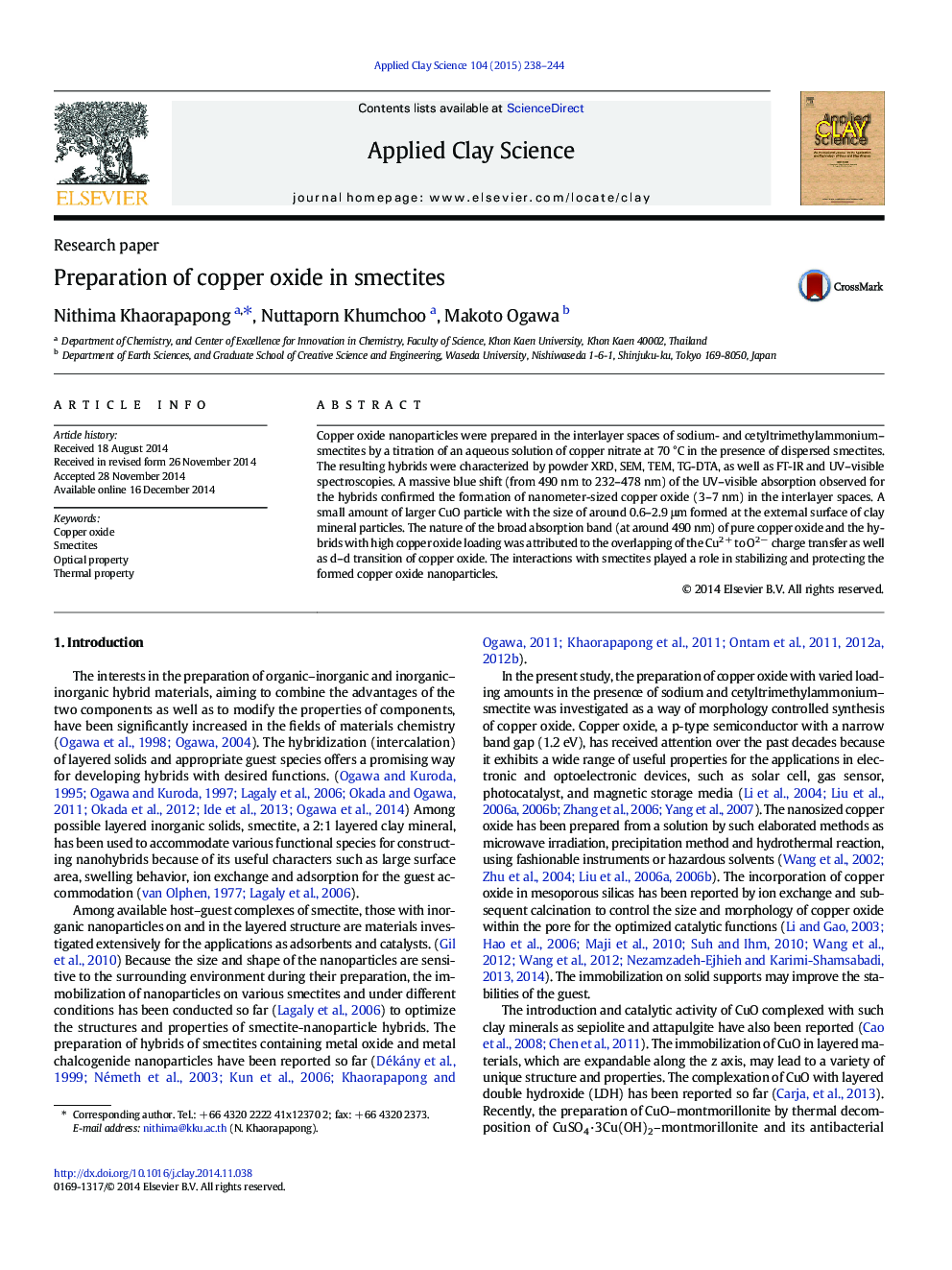| Article ID | Journal | Published Year | Pages | File Type |
|---|---|---|---|---|
| 1694634 | Applied Clay Science | 2015 | 7 Pages |
•CuO–smectite hybrids were prepared by the solid–liquid reaction at 70 °C.•Absorption blue shift confirmed formation of nanosized CuO in the interlayer spaces.•Larger CuO particle (0.6–2.9 μm) formed at the external surface of clay particles.•Thermal decomposition of CuO formed in smectites was modified compared to bulk CuO.
Copper oxide nanoparticles were prepared in the interlayer spaces of sodium- and cetyltrimethylammonium–smectites by a titration of an aqueous solution of copper nitrate at 70 °C in the presence of dispersed smectites. The resulting hybrids were characterized by powder XRD, SEM, TEM, TG-DTA, as well as FT-IR and UV–visible spectroscopies. A massive blue shift (from 490 nm to 232–478 nm) of the UV–visible absorption observed for the hybrids confirmed the formation of nanometer-sized copper oxide (3–7 nm) in the interlayer spaces. A small amount of larger CuO particle with the size of around 0.6–2.9 μm formed at the external surface of clay mineral particles. The nature of the broad absorption band (at around 490 nm) of pure copper oxide and the hybrids with high copper oxide loading was attributed to the overlapping of the Cu2 + to O2− charge transfer as well as d–d transition of copper oxide. The interactions with smectites played a role in stabilizing and protecting the formed copper oxide nanoparticles.
Graphical abstractFigure optionsDownload full-size imageDownload as PowerPoint slide
